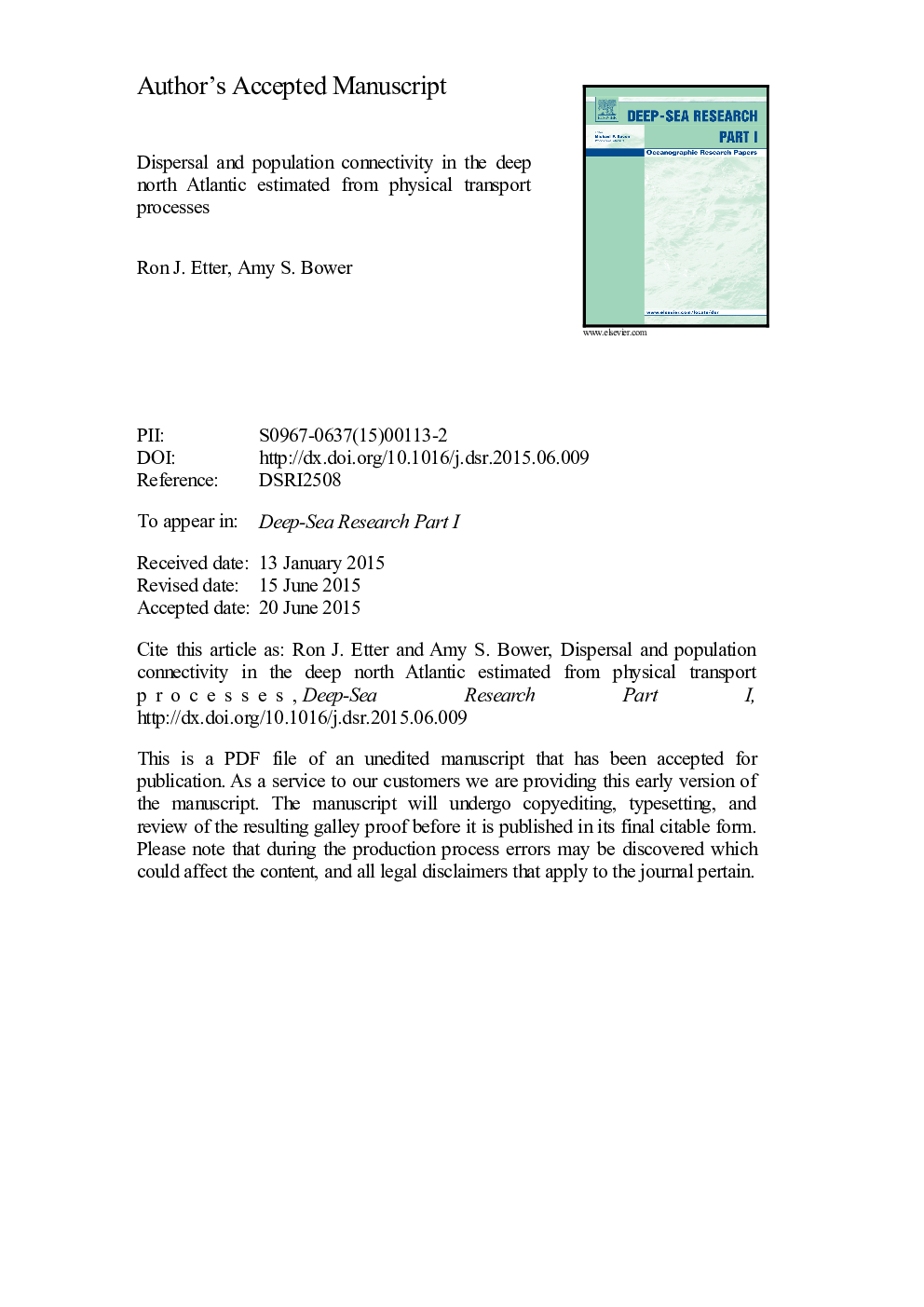| کد مقاله | کد نشریه | سال انتشار | مقاله انگلیسی | نسخه تمام متن |
|---|---|---|---|---|
| 6383421 | 1626326 | 2015 | 52 صفحه PDF | دانلود رایگان |
عنوان انگلیسی مقاله ISI
Dispersal and population connectivity in the deep North Atlantic estimated from physical transport processes
ترجمه فارسی عنوان
پراکندگی و اتصال به جمعیت در عمیق شمال آتلانتیک تخمین زده شده از فرآیندهای حمل و نقل فیزیکی
دانلود مقاله + سفارش ترجمه
دانلود مقاله ISI انگلیسی
رایگان برای ایرانیان
کلمات کلیدی
موضوعات مرتبط
مهندسی و علوم پایه
علوم زمین و سیارات
زمین شناسی
چکیده انگلیسی
Little is known about how larvae disperse in deep ocean currents despite how critical estimates of population connectivity are for ecology, evolution and conservation. Estimates of connectivity can provide important insights about the mechanisms that shape patterns of genetic variation. Strong population genetic divergence above and below about 3000Â m has been documented for multiple protobranch bivalves in the western North Atlantic. One possible explanation for this congruent divergence is that the Deep Western Boundary Current (DWBC), which flows southwestward along the slope in this region, entrains larvae and impedes dispersal between the upper/middle slope and the lower slope or abyss. We used Lagrangian particle trajectories based on an eddy-resolving ocean general circulation model (specifically FLAME - Family of Linked Atlantic Model Experiments) to estimate the nature and scale of dispersal of passive larvae released near the sea floor at 4 depths across the continental slope (1500, 2000, 2500 and 3200Â m) in the western North Atlantic and to test the potential role of the DWBC in explaining patterns of genetic variation on the continental margin. Passive particles released into the model DWBC followed highly complex trajectories that led to both onshore and offshore transport. Transport averaged about 1Â km dâ1 with dispersal kernels skewed strongly right indicating that some larvae dispersed much greater distances. Offshore transport was more likely than onshore and, despite a prevailing southwestward flow, some particles drifted north and east. Dispersal trajectories and estimates of population connectivity suggested that the DWBC is unlikely to prevent dispersal among depths, in part because of strong cross-slope forces induced by interactions between the DWBC and the deeper flows of the Gulf Stream. The strong genetic divergence we find in this region of the Northwest Atlantic is therefore likely driven by larval behaviors and/or mortality that limit dispersal, or local selective processes (both pre and post-settlement) that limit recruitment of immigrants from some depths.
ناشر
Database: Elsevier - ScienceDirect (ساینس دایرکت)
Journal: Deep Sea Research Part I: Oceanographic Research Papers - Volume 104, October 2015, Pages 159-172
Journal: Deep Sea Research Part I: Oceanographic Research Papers - Volume 104, October 2015, Pages 159-172
نویسندگان
Ron J. Etter, Amy S. Bower,
